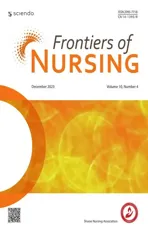A bibliometric analysis and visualization of research on heart failure complicated with malnutrition
2023-12-15WuGaJishiJinBoFangJieLi
Wu-Ga Jishi,Jin-Bo Fang,Jie Li
West China School of Nursing/Department of West China Hospital, Sichuan University, Chengdu, Sichuan 610065, China
Abstract: Objective:This study aimed to have a good knowledge of heart failure complicated with malnutrition research status,hotspots,and forecast research trends using bibliometric analysis and visualization of studies of heart failure complicated with malnutrition in the past 10 years.Methods:Articles related to malnutrition-induced heart failure were obtained from the Web of Science Core Collection (WoSCC)series from January 2012 to January 2022.Two software (Java CiteSpace 5.8R3 and Microsoft Excel 2019) were used to perform bibliometric and knowledge-map analysis,including analyzing the annual publication and trend of articles,authors and co-cited authors,institutions/countries,co-cited journals,co-occurrence,clusters,and burst of keywords,co-cited references,and reference burst.Results:A total of 672 articles appeared in 180 scientific journals by 4249 authors from 1453 institutions in 71 countries.Over the past 10 years,the number of related studies released has shown an upward trend,and the range of increases has been larger over the past 5 years.Takatoshi Kasai released the most papers,while Anker S D had the most co-quotes.Simultaneously,active cooperation existed in complicated heart failure with researchers on malnutrition.Circulation, Journal of The American College of Cardiology,and Clinical Nutrition were the top 3 co-cited journals.The USA,Japan,and China were the most productive countries,while Johns Hopkins University was the most active institution.In addition,the reference published by Ponikowski P had the most co-citations,relating to as a knowledge base.The latest hotspots of heart failure complicated with malnutrition mainly included research on: (1) assessment of nutrition status,the impact/risk factor of nutrition,and the prevalence and outcome of the patients;(2) heart failure complicated with malnutrition when complicated with other diseases,for example,chronic kidney disease and diabetes mellitus;(3) the nutrition of child patients with heart failure complicated with malnutrition;and (4) the treatment of heart failure complicated with malnutrition,including assist devices,organ transplantation,and drug therapy.While the frontier topics included research on: (1) the index of heart failure complicated with malnutrition;(2) the effect of sarcopenia to heart failure complicated with malnutrition patients and the use of geriatric nutritional risk index to assess the nutritional statue;and (3) find the nutritional risk index.Conclusions:This study conducted a full overview of the present research situation,hotspots,and frontiers by using bibliometric and visualization analysis methods in heart failure complicated with malnutrition,which would provide a helpful reference for future research.
Keywords: bibliometric • CiteSpace • heart failure • malnutrition • visualization
1.Introduction
Heart failure is defined as a clinical syndrome consisting of dyspnea,malaise,swelling,and/or decreased exercise capacity owing to the loss of compensation for cardiac pumping function because of structural and/or functional abnormalities of the heart.1Malnutrition often occurs in patients with suffering from heart failure due to increased body consumption,intestinal edema,and dietary restriction.2The incidence of malnutrition was found to be as high as 46%.Once malnutrition occurs,it severely affects the patient’s long-term prognosis and is an independent risk factor for all-cause death and rehospitalization.3With the progress of the aging population and the prolongation of the course of heart failure,the risk of malnutrition is also gradually increasing,which seriously affects the quality of life of patients.
Web of Science Core Collection (WoSCC) is often used as the database for bibliometric analysis,because it is the world’s leading scientific citation search and analytical information platform,and contains a complete range of articles about different medical research fields.1
Bibliometrics is both a research area determining the distribution of the information produced quantitatively by various factors and a research method.2–4It was used to analyze different field of research progress,including Coronavirus Disease 2019 (COVID-19) research,Bone Tissue Regeneration field,and library managers.5–7It can not only qualitatively and quantitatively analyze the contribution and cooperation of authors,institutions,countries,and journals,but also analyze the research fronts,hotpots,and the emerging trends in the future,along with other traditional methods,for example,meta-analysis.8
CiteSpace is used to generate and analyze jointly cited reference networks from bibliographical records extracted from the Web of Science.9In this study,CiteSpace 5.8R3 software was used to search the relevant papers on heart failure complicated with malnutrition from January 2012 to January 2022 in the WoSCC for bibliometric and visualization analysis to explore the research frontier and hotspots and to provide an effective research direction for the study of heart failure complicated with malnutrition in the future.
This study aimed to use CiteSpace 5.3R3 and Excel 2019 to have a good knowledge of heart failure complicated with malnutrition research status,hotspots,and forecast research tendency by bibliometric analysis and visualization of the annual publication and trend of articles,authors and co-cited authors,institutions/countries,co-cited journals,co-occurrence,clusters,and burst of keywords,co-cited references,and references burst.
2.Materials and methods
2.1.Materials
The research material was searched from WoSCC,including SCI-Expanded,SSCI,Arts and Humanities Citation Index (AHCI),Conference Proceedings Citation Index-Science (CPCI-S),Conference Proceedings Citation Index -Social Sciences &Humanities (CPCI-SSH),Emerging Sources Citations Index Emerging Sources Citations Index (ESCI),and CCR-Expanded and IC indexes.The search strategy was TS=(heart failure AND malnutrition),the time span was from January 2012 to January 2022,and the language was English.A total of 672 articles related to heart failure complicated with malnutrition were searched.The searched articles were exported in “download” format and imported into the CiteSpace software to remove duplicates.Finally,12 editorial material articles,11 Letter articles,51 meeting abstract articles,and 4 proceeding paper articles were excluded,while 594 literatures were included involving 492 articles and 102 reviews.
2.2.Methods
Based on the CiteSpace and Excel software,the annual publication and trend of articles,authors and cocited authors,institutions/countries,co-cited journals,co-occurrence,clusters,and evolution of keyword,co-cited references,and reference burst were visually analyzed.
Setting the basic parameters of CiteSpace software:time slicing was January 2012 to January 2022,years per slice was 1 year;top N per slice=50;the term source included title,abstract,authors,keywords and keywords plus;two types were selected author,institution,country,keywords,reference,and cited journal.In the visualization map,the N value represents the number of nodes,and the E value represents the number of connections.The size of the circle indicates the number or citation frequency;the larger the circle,the more literature and citation frequency.The colors gray to red represent the years 2012–2022;the wider the color range,the more citations or frequency and the sudden sharp increase of the citation frequency in the corresponding time period.8Intermediary centrality is used to discover and measure the importance of literature,journals,keywords,and so on and purple circles are used to mark the direction of this kind of analysis.Commonly,a centrality greater than 0.1 indicates that the cooperation is more closed.Excel was used to manage the data and analyze the annual publication.
3.Results
3.1.Analysis of publications
A total of 594 articles related to malnourished heart failure between January 2012 and January 2022 were analyzed.It was found that the total number of published studies in the year is only 1 day in 2022,so it is neglected.Therefore,the annual publication trends to increase gradually,and the volume of literature publication has increased the most in the past 3 years,indicating that heart failure complicated with malnutrition has received increasing attention from researchers,and the research prospects will grow better (Figure 1).

Figure 1.Annual publication and trends.
3.2.Author analysis
Author analysis includes a visualization analysis of the authors’ publications and a co-cited author analysis to understand the main impacts of the author in this field.
3.2.1. Author publications analysis
The analysis of the authors’ publications make it possible to analyze the degree of cooperation between the authors and the main research team on heart failure complicated by malnutrition.A total of 4249 authors were involved in heart failure complicated malnutrition;14 authors published more than 5 articles.The most published writer was Takatoshi Kasai (Table 1),whose research contents mainly included the diagnosis of heart failure malnutrition,the epidemiology of malnutrition,the risk factors for heart failure complicated with malnutrition,and the influence of the application of nutrition assessment tools on the long-term prognosis of patients;he worked closely with other authors to publish authoritative articles in this field.10–16

Table 1.The top 5 authors published.
The authors who published at least 5 papers were included to build the visualization map (Figure 2).It can be seen from the map that the authors with more papers are mainly concentrated in the same year of 2017.
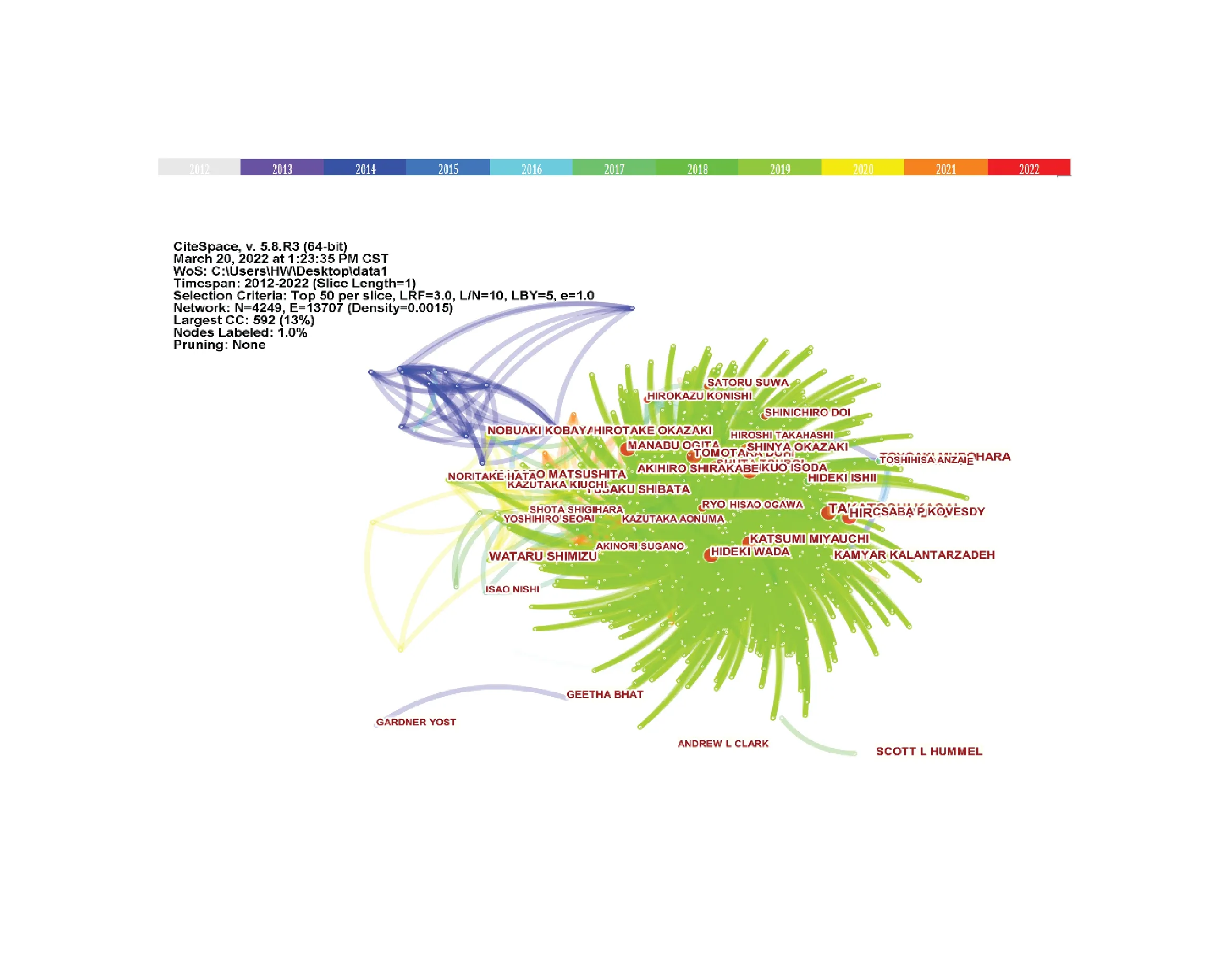
Figure 2.Authors visualization map (n≥5).WoS,Web of Science.
3.2.2. Co-cited author analysis
Co-cited authors’ analysis can know the main core effect authors of heart failure complicated with malnutrition,as well as the research team,as well as the degree of cooperation between the core authors.17A total of 503 co-cited authors were included (Figure 3).Ten co-cited authors co-cited more than 50 citations.The top 5 co-cited authors were Anker S D (n=90),Ponikowski P(n=86),Kalantar-Zadeh K (n=80),Bonilla-Palomas J L(n=76),and Bouillanne O (n=74) (Table 2).These cocited authors had in-depth cooperation with each other,and their research results represent the point of view of heart failure complicated with malnutrition and had a strong influence on the research in this field.Anker S D,who has the highest number of citations,has the greatest intermediary centrality,indicating that he has the greatest influence and the most authority in this research field.The main research contents of Anker S D included the diagnosis and management of heart failure,such as the development of guidelines,the etiological study of heart failure complicated with malnutrition,and the prognosis of patients with heart failure complicated with malnutrition.18–23
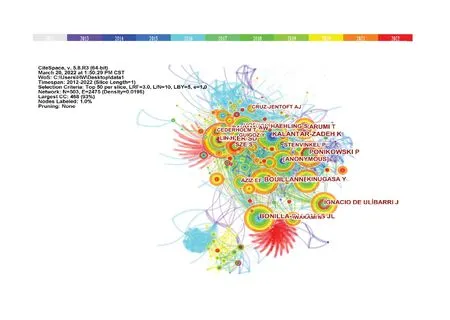
Figure 3.Co-cited authors visualization map (n ≥ 40).WoS,Web of Science.
3.3.Institutions and countries analysis
Through the visualization analysis of literatures,publishing institutions,and countries,the core institutions and research countries can be identified to know the research status of heart failure complicated with malnutrition.
3.3.1. Institutions analysis
A total of 1452 institutions were included;23 institutions published at least 5 papers.The top 5 institutions are shown in Table 3.Johns Hopkins University was the institution whose publications had more than 10 articles.Cleveland Clin had the highest centrality,which is a central node in the structure rather than cooperation among institutions.A visualization map of institutions was built by including publications having more than 7 papers(Figure 4).
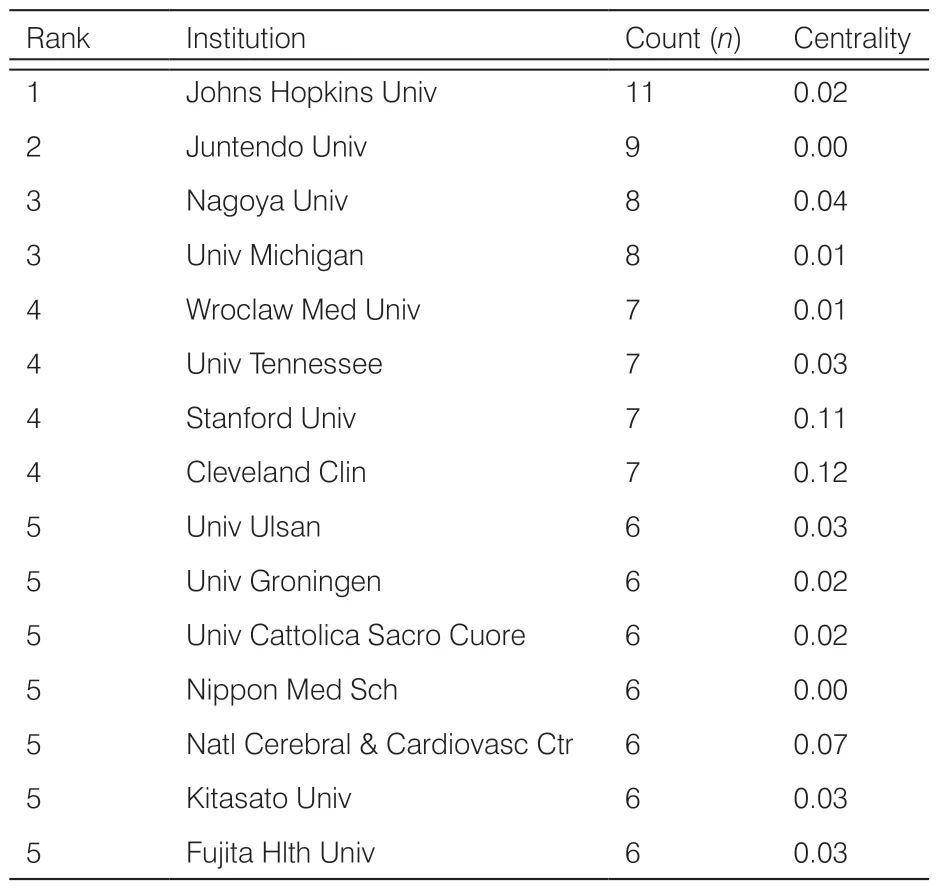
Table 3.The top 5 institutions.
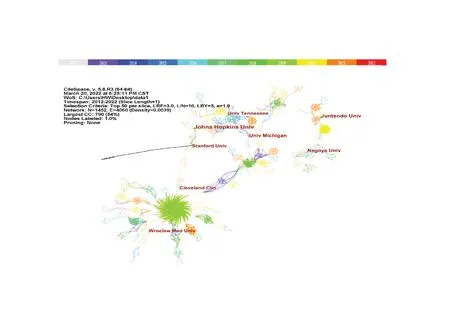
Figure 4.Visualization map of the institutions (n ≥ 7).WoS,Web of Science.
3.3.2. Countries analysis
Through the visual analysis of the countries published in the literatures,the degree of research on heart failure complicated with malnutrition in each country can be obtained.A total of 71 counties was included in the research of heart failure complicated with malnutrition(Figure 5).The top 5 counties were the USA (n=137),Japan (n=115),China (n=47),Italy (n=33),and Spain(n=32).The publications of the USA and Japan were more than 100 articles,indicating that the research center of heart failure complicated with malnutrition is mainly in developed countries;meanwhile,the centrality of the USA was the highest,which meant that it was also cooperating with other countries and it was the central research country.China ranks the third,although it ranks first in developing countries,but the gap in the first 2 countries is large (Table 4).
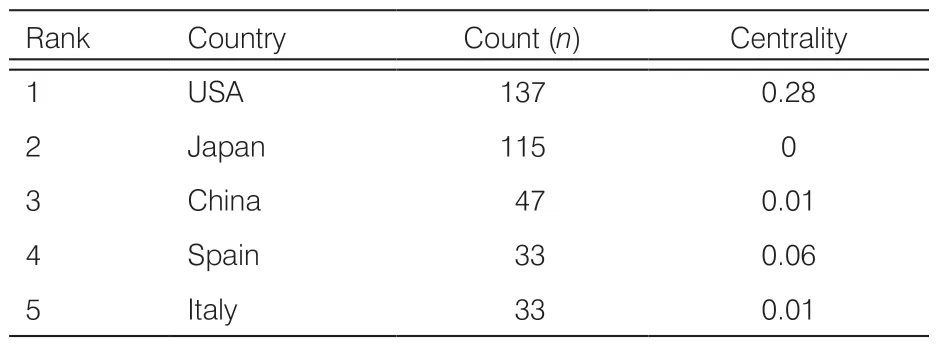
Table 4.The top 5 countries.
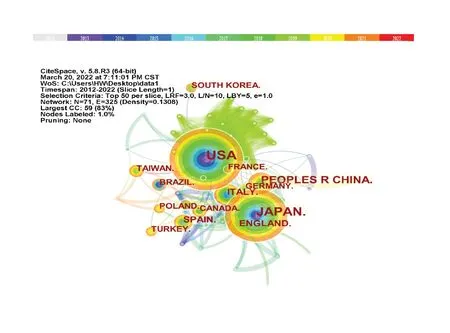
Figure 5.Visualization map of countries (n≥ 17).WoS,Web of Science.
3.4.Co-cited journal analysis
Visual analysis of jointly cited journals can master the fundamental influence of journals on heart failure complicated by malnutrition and provide leadership for finding relevant references in the future.A total of 180 co-cited journals were included (Figure 6);22 co-cited journals had more than 100 citations.The top 5 co-cited journals wereCirculation(n=264),J Am CollCardiol(n=257),Clin Nutr(n=232),New Engl J Med(n=231),andEur Heart J(n=224) (Table 5)and were the main authoritative journals in heart failure complicated malnutrition,which provide a reference for future study.

Table 5.The top 5 co-cited journals.

Figure 6.Visualization map of co-cited journals (n≥ 198).WoS,Web of Science.
3.5.Keyword analysis
Keywords,co-occurrence,cluster,timeline view,and burst analysis were used to obtain the research status,hotspots and frontiers of heart failure complicated with malnutrition.24
3.5.1. Keywords co-occurrence analysis
A total of 1589 keywords were included in the keywords co-occurrence map (Figure 7).The top 10 keywords were heart failure,malnutrition,mortality,nutritional status,body mass index,association,impact,risk,outcome,and prevalence (Table 6),which were also the 10 keywords whose frequency was more than 50 times.The frequency of heart failure,malnutrition,and mortality was more than 150 times,which indicated the mortality of heart failure complicated malnutrition had been a close attention to research at present.

Figure 7.Keyword co-occurrence visualization map (n ≥ 35).WoS,Web of Science.
3.5.2. Keyword cluster analysis
The cluster of keywords is used for grouping keywords,and the log-likelihood ratio (LLR) algorithm is used for naming keywords.25Ten cluster tags are formed(Figure 8): modularQ=0.6883 and weighted mean silhouetteS=0.863;Q>0.3 indicate that the clustering structure is significant,S>0.5 indicates that clustering is reasonable,andS>0.7 indicates convincing clustering.25According to Figure 8,the main research frontiers in this field are heart failure,end-stage renal disease,congenital heart disease,amino acid,percutaneous coronary intervention,functional status,ventricular assist device,cardiovascular risk,organ transplantation,and prealbumin.
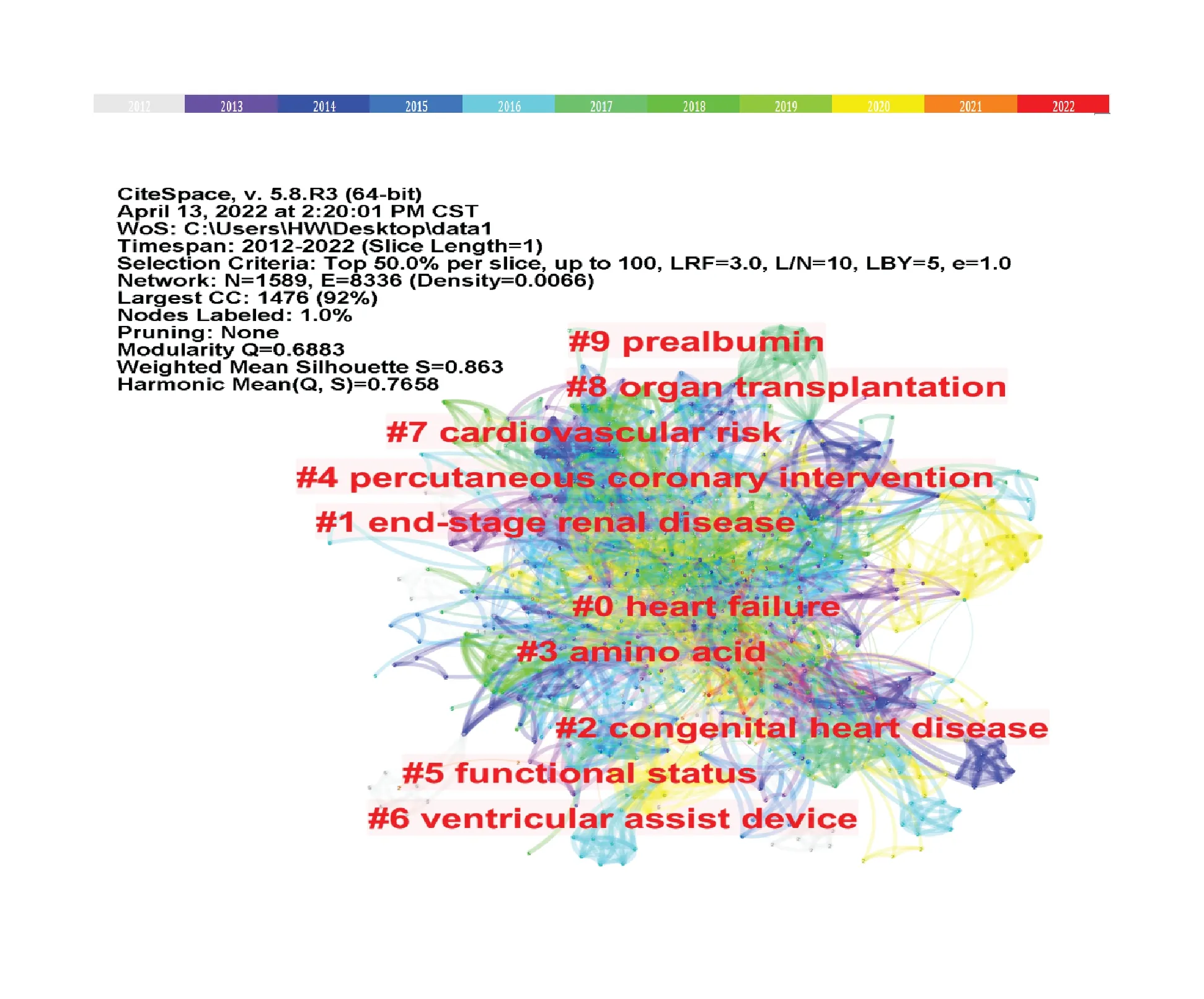
Figure 8.Keywords cluster map.WoS,Web of Science.
The keywords contained in each cluster label are shown in Table 7.The size of keywords cluster id #0,#1,and #2 was more than 100,indicating that keywords are the research hotspots in heart failure complicated with malnutrition.

Table 7.Keywords cluster analysis.
3.5.3. Timeline view of keywords
The analysis of keyword cluster timeline view shows the research hotspots and dynamic frontiers by using Timeline view.As shown in Figure 9,heart failure complicated malnutrition is paid close attention by researchers in the past 10 years.
3.5.4. Keywords burst analysis
Burst keywords refer to a period of time-related topics in a certain field that received a certain degree of attention.They can be used to reflect the research focus of this field in that period,have important research value,and predict future research directions.26Therefore,the burst analysis of keywords can reveal the research frontier and predict future research directions in this field.According to Figure 10,the main burst words were atherosclerosis,risk index,hospitalization,risk factor,index,older adult,sarcopenia,prognostic impact,geriatric nutritional risk index,and nutritional risk index in the past 5 years.

Figure 10.The top 25 keywords burst.
3.6.References analysis
3.6.1. Co-cited references analysis
The literature cited together in a group of publication is called co-cited reference,which is one of the most important indicator of bibliometrics.27A total of 5058 references were co-cited in heart failure complicated malnutrition (Figure 11).The top 5 co-cited references are shown in Table 8.Table 8 shows the “2016 ESC Guidelines for the diagnosis and treatment of acute and chronic heart failure: the task force for the diagnosis and treatment of acute and chronic heart failure of the European Society of Cardiology (ESC),” developed with the special contribution of the Heart Failure Association(HFA) of the ESC28was the most cited reference,meaning that it was the central data of heart failure complicated malnutrition.
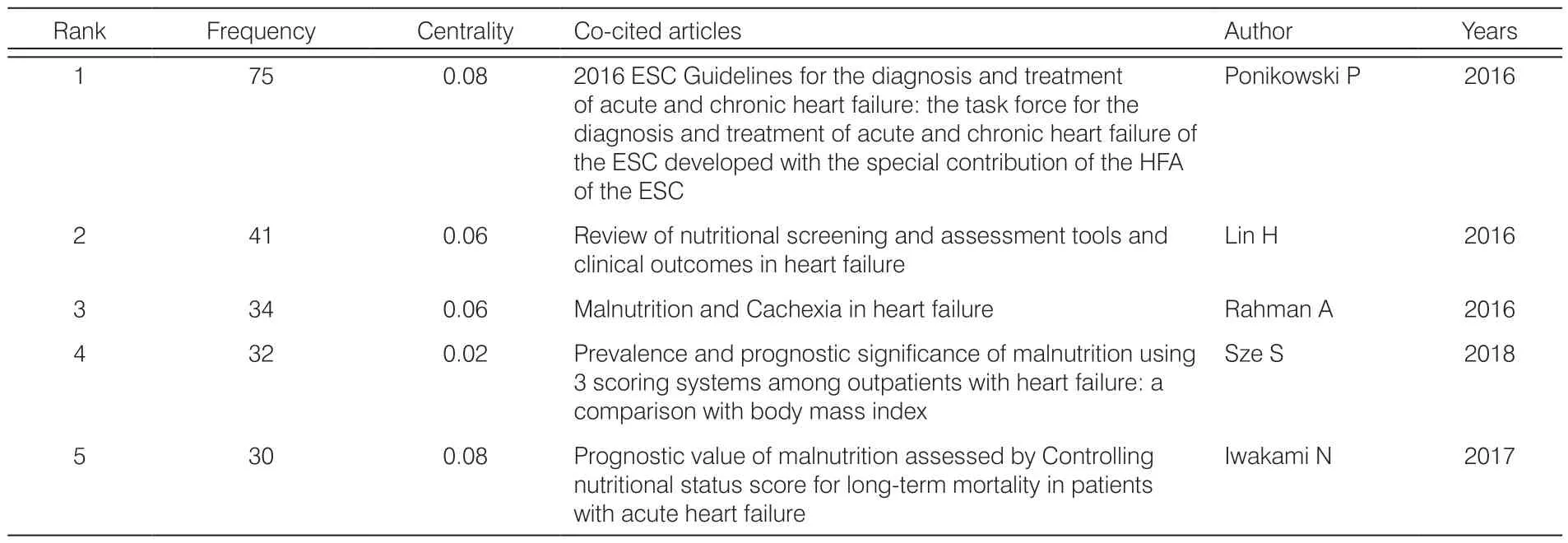
Table 8.The top 5 co-cited reference.

Figure 11.Co-cited reference visualization map (n≥15).WoS,Web of Science.
3.6.2. References burst analysis
Reference burst analysis can also gain the research hotspots in a field.29The top 10 references citation bursts are given in Figure 12,which were the main authoritative references and would continue to be cited in the future.

Figure 12.The top 10 references bursts.
4.Discussion
Heart failure is a group of complex clinical syndromes that have the characteristics of high incidence,high hospitalization rate,and high mortality.28It is a serious public health problem.30Malnutrition is common in patients with heart failure and is an independent risk factor affecting all causes of death.31,32In this study,CiteSpace 5.8 R3 software was used to analyze the related literature of the WoSCC (time span from 1 January 2012 to 1 January 2022,English language).The annual publication of the literature showed an upward trend,indicating that the serious problem of heart failure complicated with malnutrition had received extensive attention and research and had good research prospects in recent years.Among them,the author with the most published volume was Takatoshi Kasai,the author with the highest citation frequency,the top 3 publications co-cited journals wereCirculation,J Am Coll Cardiol,andClin Nutrand the centrality of the top 3 institutions and journals was less than 0.1,which indicated that the cooperation between the institutions and journals was less and needed to be strengthened.The top 3 countries were the USA,Japan,and China,among which the USA and Japan had published more than 100 articles and were the main research countries in this field.The “2016 ESC Guidelines for the diagnosis and treatment of acute and chronic heart failure: the task force for the diagnosis and treatment of acute and chronic heart failure of the ESC developed with the special contribution of the HFA of the ESC”28published by Ponikowski P and “Review of nutritional screening and assessment tools and clinical outcomes in heart failure”33published by Lin H were among the top 2 cited frequency articles,and they were the important papers in heart failure complicated malnutrition.
Visualization,cluster,and burst analysis of keywords are important functions of the CiteSpace software,which can reveal the research hotspots,frontiers,and future research directions in related fields.34–36Through the results of timeline,cluster,and burst analysis of keywords,it can be seen that the collinear frequency of heart failure,malnutrition,and mortality in this field were more than 100 times,which indicated that the researchers paid special attention to the mortality of patients with heart failure complicated with malnutrition.The results of keywords cluster analysis showed that the main research direction of #0 was how to select the nutrition assessment tools and assess the nutritional risk for heart failure complicated with malnutrition;#1 and #4 researched on heart failure complicated with malnutrition when complicated other diseases,for example,chronic kidney disease,and diabetes mellitus;while #3,#5,#7 and #9 researched on the nutritional risk factors including metabolism,skeletal muscle,and oropharyngeal dysphagia.What is more,#2 was the study of nutrition children patients with heart failure complicated with malnutrition;while #6 and #8 researched on the treatment of heart failure complicated with malnutrition,including assist device,organ transplantation and drug therapy.
From the result of keywords co-occurrence,cluster,and burst,the main research hotspots in this field were research on (1) assessment of nutrition status,the impact/risk factor of nutrition,and the prevalence and outcome of the patients;(2) heart failure complicated with malnutrition when complicated with other diseases,for example,chronic kidney disease and diabetes mellitus;(3) the nutrition of child patients with heart failure complicated with malnutrition;and (4) the treatment of heart failure complicated with malnutrition,including assist device,organ transplantation,and drug therapy.While the research frontiers in this field included research on: (1) the index of heart failure complicated with malnutrition complicated;(2) the effect of sarcopenia to heart failure complicated with malnutrition patients and the use of geriatric nutritional risk index to assess the nutritional statue;and (3) to find the nutritional risk index.
In summary,this study shows the research structure of heart failure complicated with malnutrition with CiteSpace visualization analysis software,which is helpful to grasp the present situation,frontier,and future research direction of this field.However,the literatures included in this study mainly come from the WoSCC,so there may be limitations that need to be further improved upon in the future.
5.Conclusions
This study performed a full overview of the present research situation,hotspots,and frontier by using bibliometric and visual analysis methods in heart failure complicated with malnutrition,which would provide a helpful reference for future research.
Author contributions
Wuga Jishi analyzed the data and was the major contributor in writing the manuscript.Jie Li collected the data.Jinbo Fang reviewed the draft.All the authors have read and approved the final manuscript.
Ethical approval
This article does not contain any studies with human participants or animals performed by any of the authors.
Conflicts of interest
All contributing authors declare no conflicts of interest.
杂志排行
Frontiers of Nursing的其它文章
- Impacts of fighting against COVID-19 on critical care nurses’ psychological and physical health: a literature review
- Investigating adverse events in long-term care facilities: a systematized review
- Implementation and achievements of enhanced recovery after surgery program in perioperative management of gastric cancer patients†
- Dietary adherence and the associated factors among Indonesian patients with type 2 diabetes: what should we be concerned about?†
- Factors related to self-management behavior among persons with mildto-moderate chronic obstructive pulmonary disease in Wenzhou,China
- Knowledge,attitude,and practices related to medication errors among nursing professionals: a questionnaire-based study in a tertiary care hospital
